free pages from our English Language software program
Graphology – definition
![]() Graphology is the study of the system of symbols which communicates language in written form.
Graphology is the study of the system of symbols which communicates language in written form.
![]() In its more popular sense, it is the study of handwriting.
In its more popular sense, it is the study of handwriting.
Examples
![]() This is an example of a pictographic symbol.
This is an example of a pictographic symbol.
Use
![]() In the English language, writing starts on the left and moves to the right. It begins at the top of the page and moves downwards.
In the English language, writing starts on the left and moves to the right. It begins at the top of the page and moves downwards.
![]() This might seem rather obvious, but writing in some other languages is arranged differently. Hebrew moves from right to left in rows, and Japanese from top to bottom in columns.
This might seem rather obvious, but writing in some other languages is arranged differently. Hebrew moves from right to left in rows, and Japanese from top to bottom in columns.
![]() NB! Graffiti is a type of graphology, but if you confuse the two you’ll end up in trouble.
NB! Graffiti is a type of graphology, but if you confuse the two you’ll end up in trouble.
![]() Graphology in context. ‘Grapheme’ is the term for the smallest unit of written communication. A letter of the alphabet or a punctuation mark is a grapheme. A scientific, mathematical, or any other kind of symbol is also a grapheme.
Graphology in context. ‘Grapheme’ is the term for the smallest unit of written communication. A letter of the alphabet or a punctuation mark is a grapheme. A scientific, mathematical, or any other kind of symbol is also a grapheme.
![]() English is an ideographic language. This means that the writing system is based on a set of symbols. These have no intrinsic connection with what they are expressing.
English is an ideographic language. This means that the writing system is based on a set of symbols. These have no intrinsic connection with what they are expressing.
![]() Chinese on the other hand is known as a logographic or pictographic language. This is because the characters of that language were historically pictorial representations of the object being expressed.
Chinese on the other hand is known as a logographic or pictographic language. This is because the characters of that language were historically pictorial representations of the object being expressed.
![]() Over the centuries these pictures have been stylised to the extent that they no longer resemble houses, people or trees. They now seem, to the uninitiated, just as arbitrary in their function as the English alphabet.
Over the centuries these pictures have been stylised to the extent that they no longer resemble houses, people or trees. They now seem, to the uninitiated, just as arbitrary in their function as the English alphabet.
![]() In linguistic study, graphology is a level of analysis along with phonology, vocabulary, grammar and semantics. It includes the study of layout, the use of logos and any other feature of graphical communication.
In linguistic study, graphology is a level of analysis along with phonology, vocabulary, grammar and semantics. It includes the study of layout, the use of logos and any other feature of graphical communication.
![]() Children learn to form individual letters and later to produce joined-up writing. Some students find it difficult to make the transition from upper case printing to continuous script. This can be a significant impediment to their studies.
Children learn to form individual letters and later to produce joined-up writing. Some students find it difficult to make the transition from upper case printing to continuous script. This can be a significant impediment to their studies.
![]() However, with literacy and maturity, we develop our own style of hand-writing. There is commonly a variation in the way we form our letters which is subject to context.
However, with literacy and maturity, we develop our own style of hand-writing. There is commonly a variation in the way we form our letters which is subject to context.
![]() For instance, we may form a flamboyant ‘s’ at the end of a word, but a conservative version of that same grapheme if it occurs in an initial or medial position.
For instance, we may form a flamboyant ‘s’ at the end of a word, but a conservative version of that same grapheme if it occurs in an initial or medial position.
![]() It is important to be able to distinguish between upper and lower case letters in order to punctuate. This is not possible with printing. Continuous script can also be produced much more rapidly.
It is important to be able to distinguish between upper and lower case letters in order to punctuate. This is not possible with printing. Continuous script can also be produced much more rapidly.
![]() Continuous script is easier to read than printing, because the eye is led by the connecting strokes between the characters. This is the same principle as the use of sefifed fonts in the layout of continuous writing.
Continuous script is easier to read than printing, because the eye is led by the connecting strokes between the characters. This is the same principle as the use of sefifed fonts in the layout of continuous writing.
![]() Approaches to teaching hand-writing have changed over the years. It is interesting to note that each generation seems to have its own style of handwriting. Our parents and their contemporaries seem to produce the same script style, while their parents’ generation also have their own similarly distinct style.
Approaches to teaching hand-writing have changed over the years. It is interesting to note that each generation seems to have its own style of handwriting. Our parents and their contemporaries seem to produce the same script style, while their parents’ generation also have their own similarly distinct style.
![]() Perhaps parallel with the phenomenon of speech style, handwriting styles are easier to categorise from a distance. Our children may see our contemporaries’ handwriting as belonging to an identifiable style, whilst we ourselves consider each person’s handwriting to be idiosyncratic.
Perhaps parallel with the phenomenon of speech style, handwriting styles are easier to categorise from a distance. Our children may see our contemporaries’ handwriting as belonging to an identifiable style, whilst we ourselves consider each person’s handwriting to be idiosyncratic.
Self-assessment quiz follows >>>
© Roy Johnson 2003
English Language 3.0 program
Books on language
More on grammar
 Microsoft’s Manual of Style illustrates the company’s rules for both print and screen writing, as well as their requirements for visual presentation and language use.
Microsoft’s Manual of Style illustrates the company’s rules for both print and screen writing, as well as their requirements for visual presentation and language use.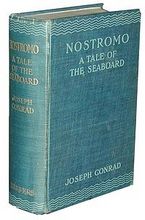 find bargains at online bookshops
find bargains at online bookshops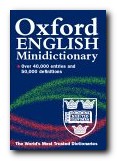
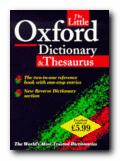 The Little Oxford Dictionary
The Little Oxford Dictionary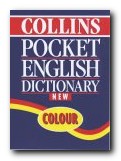
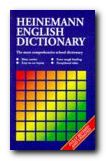
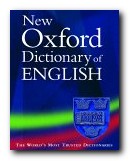 The New Oxford Dictionary
The New Oxford Dictionary
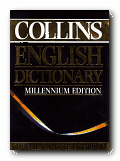
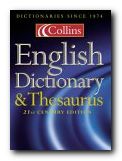

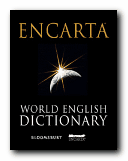
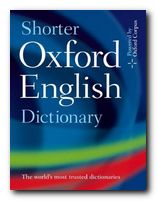
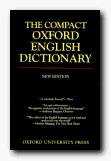 The Compact OED
The Compact OED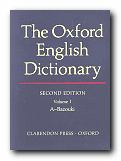
 At the end of any scholarly writing (an essay, report, or dissertation) you should offer a list of any works you have consulted or from which you have quoted. This list is called a bibliography – literally, a list of books or sources.
At the end of any scholarly writing (an essay, report, or dissertation) you should offer a list of any works you have consulted or from which you have quoted. This list is called a bibliography – literally, a list of books or sources.